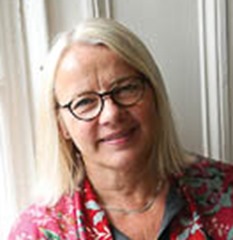Europe’s greenest capital
 Copenhagen’s European Green Capital project manager Anne-Marie Larsen outlined the city’s progress at the Northern Ireland Environment Forum.
Copenhagen’s European Green Capital project manager Anne-Marie Larsen outlined the city’s progress at the Northern Ireland Environment Forum.
Copenhagen – a city of 550,000 people – will be the European Green Capital in 2014 and, as project manager Anne-Marie Larsen says, it aims to be carbon-neutral by 2025. Larsen was visiting Belfast to speak at the Northern Ireland Environment Forum.
“If you invest in sustainability, we also think that will enhance the quality of life in the city,” she remarked. “If you have a good quality of life, you have a good city and if you have that quality, you also have investment and growth – and then you have more money to spend on sustainability.”
The Danish capital launched its Eco Metropolis strategy in 2007, with unanimous support from councillors. With an end date of 2015, it aims to make Copenhagen the “climate capital” of the world and the best city for cyclists. It would also be a “green and blue” capital and a “clean and healthy” city. Every year, the council publishes a “green account” as a progress report.
Copenhagen’s climate plan aims to reduce its carbon emissions by 20 per cent between 2005 and 2015. This target was reached in 2011 and the council then decided that the city should be carbon-neutral by 2025.
This will be a hard task as the city is expected to grow by 20 per cent by 2025. The climate plan covers four themes: energy consumption; energy production; mobility; and actions that the city administration can take.
Around two-thirds of the reductions will be achieved by renewable energy production i.e. wind (mostly offshore) for electricity and combined heat and power for district heating. Plastic will be separated from waste. Most waste is incinerated, thus generating heat for district heating, and virtually removing the need for landfill.
Waste water is stored in large reservoirs until it can be treated. As this is no longer going into the city’s rivers, people are free to swim and fish in them.
The number of cyclists went down in the 1960s as people bought more cars but a public campaign for better cycling routes took off in the 1970s and 1980s. This led to a long-term political investment in cycling and bicycle congestion is now a problem.
There are 540km of cycle lanes, with the busiest transporting 36,000 people each day. Fifty-five per cent of city residents use bikes and 75 per cent of cyclists bike all year round.
A quarter of all families with two children have a ‘cargo bike’ which often means that they don’t need to own a car.
Cycling also frees up space for “more interesting things than parking”. People are also free to bring their bikes on to public transport: “It’s very important because it makes it so much easier to commute using your bike.”
In conclusion, she commented: “Building biking infrastructure is not cheap but it’s still cheaper than building infrastructure for cars.”





